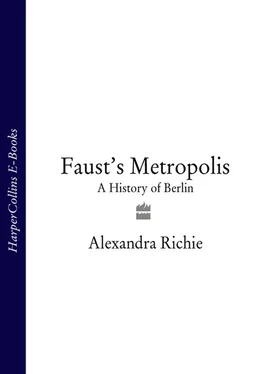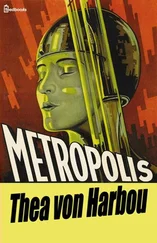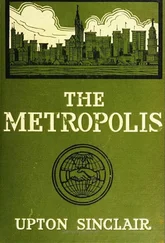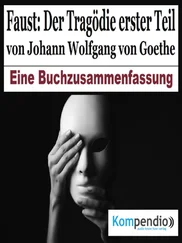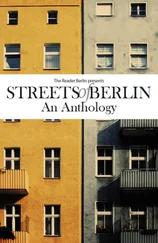Defeated by the Allies in 1945 and occupied by the rapacious Soviet army, Berlin turned its back on history and ‘began again’ at Stunde Null – Zero Hour. The Cold War brought division between the world’s two dominant and opposing ideologies, and the sector boundary became the place where the ‘Communist east’ and the ‘capitalist west’ confronted each other, bringing with them the constant threat of nuclear war. With the erection of the Wall in 1961 the city was divided, each half with its own identity and culture yet linked by a common past which everyone wanted to forget. In 1989 the grim, Stasi-ridden GDR collapsed, and Berlin was once again unified and was later named the capital of a united Germany. Now a new city is rising from the vast building sites at the Potsdamer Platz and the Alexanderplatz and the Spreebogen. Great promises are being made for this ‘symbol of the new German’, the ‘capital of Mitteleuropa ’, the ‘heart of Europe’. But how accurate will such predictions be?
When Berlin was named the capital of a united Germany in 1871 the optimism was unbridled. Pages of newsprint were dedicated to ‘the phenomenon that is Berlin’: a 1900 guide entitled Berlin für Kenner (Berlin for Connoisseurs) called it ‘the most glorious city in the world’, ‘the capital of the German Reich and the Kingdom of Prussia, Residence of the German Emperor and the Kings of Prussia, Seat of the German Reichstag and Prussian Landtag’. Greater Berlin, it said, had ‘a population of 3,019,887’, a ‘garrison of 23,000 men’; it was the ‘cleanest city in the world’, it contained ‘as much railway track as lay between Frankfurt and Berlin’, it collected ‘over 89 million marks in taxes’ and had ‘362 million marks in savings in its banks’ – even its mayor had written a masterpiece, the (now forgotten) Green Chicken. 8 By the turn of the century the optimism seemed justified. As Berlin approached the year 1900 it claimed to be the ‘richest city in Europe’ and the ‘metropolis of intelligence’. In an 1899 survey published in the Berliner illustrirte Zeitung Berliners declared that the most important event in the past hundred years of world history had been the unification of Germany – which had in turn led to the creation of its new capital. 9Berlin, it was said, was destined to be the most important place on earth, which would hold the key to history ‘economically, culturally, politically’. But twenty years after the ebullient predictions the city was suffering war, defeat and revolution. The term ‘capital city’ became a curse as Berlin was transformed into the doomed capital of Weimar, then the criminal capital of the ‘Thousand Year Reich’, and then the illegal capital of the GDR. It has not been a very promising record.
Today Berlin stands on the threshold of another centenary and its new status is a fait accompli ; on 31 August 1990 Germans signed the Unification Treaty naming Berlin as ‘Capital of United Germany’; on 20 June 1991, after a fierce debate, the Bundestag voted by 337 to 320 to move the capital back to Berlin; on 25 August 1992 Helmut Kohl signed the Capital Agreement, followed on 10 March 1994 by the Berlin/Bonn Act, which enshrined the move of the German parliament (the Bundestag) and the federal government (the Bundesregierung) to Berlin. The Chancellery of the Federal President had already moved by January 1994, and the rest are to be transferred in the course of 1999. Berlin will soon house Germany’s most important ministries, including Foreign Affairs, the Interior, Justice and Finance and Economics, as well as Transport, Labour and Social Affairs, the Family and Regional Planning. Berlin will be the political capital; only a handful of offices will remain in the administrative capital, Bonn. 10Like Faust, Berlin has been given another chance.
The new Berlin visionaries are not daunted by the failures of the past. On the contrary, they are keen to prove that Berlin has changed and that its present aspirations are peaceful and democratic. Berlin, say its supporters, now has a ‘new role’ in Germany and in Europe, a new place in the world. Its construction will be based on its past excellence – the so-called ‘critical reconstruction’ of the architectural historian Dieter Hoffmann-Axthelm – and incorporated into Hans Stimmann’s extensive street plans. 11An official guide to the city, with a foreword by the mayor, Eberhard Diepgen, spelled this out:
Berlin has a future again. Our city is the biggest in Germany and will soon have a population of 4 million people … developing into a metropolis of science and culture, of the media and of business. The universities and research institutes, the opera houses, theatres, museums and libraries are just as much attractions to our city as its colourful neighbourhoods and the charming landscape of woods and lakes surrounding it.
The Berlin Wall and the Iron Curtain which divided the whole of Europe have also made Berlin ‘an attractive location for business again … Important companies are setting up new offices in the city or intensifying their involvement here. Building is going on all over the city … The construction means hope for the future. A new city is growing, carefully merging with the old buildings which have been handed down to us.’ 12A visitor who last stood at the Wall in 1989 will find the centre virtually unrecognizable. Ironically, however, this is not the first time Berliners have passed over this same ground and marvelled at the construction sites.
Only a hundred years ago Berliners were making the very same comments about the very same squares and intersections and boulevards. Georg Hermann, the Berlin writer who died in Auschwitz in 1943, remarked in 1896 that ‘only five, ten, twenty years ago nothing but windswept fields and willow trees stood … on these very sites which are now covered with asphalt and litter’; in 1914 Paul Scheerbart wrote of the shiny glass buildings rising from the sand, structures which were to create a ‘new milieu’ in Berlin and which would ‘bring us a new culture’; Maximilian Harden noted in 1901 that old Berlin was being completely ‘walled in’ and ‘bricked up’ in the rush to redevelop the city centre; and in his 1888 novel Wer ist der Stärkere? Conrad Alberti described the huge construction site near the Potsdamer Platz, marvelling at the number of cranes and workmen and piles of earth to be found there. Later, in the 1930s, Berliners watched and wondered as Albert Speer and Hitler ordered buildings and streets to be blown up to clear the way for the North – South Axis in their bid to create Germania, the capital of the Third Reich; after the war, Berliners watched again as many of the last vestiges of the historic city were removed during the post-war building boom. In 1961 the reconstruction was hindered by the sudden erection of the Wall, leaving what was the very heart of Berlin a desolate no man’s land. Today those areas are finally, in the new Berlin jargon, being ‘knitted together’ into the new capital of the ‘Berlin Republic’. 13
On a cold grey day in 1996 I stopped in at the Red Rathaus, Berlin’s old city hall, to see a display of the new architectural plans for the city. The dingy trappings of East German culture had been replaced by West German chrome-and-white displays. In the centre of the room stood a broad platform the size of two billiard tables covered with a gigantic relief map. A young man in designer jeans and designer glasses and a designer haircut was standing under the halogen lights gesticulating at a group of rather shy Berliners and explaining what their new city was going to look like. He pointed at the model with a long chrome stick: ‘The white represents Berlin as it is,’ he said; ‘the cream represents Berlin as it will be. ’ Sure enough, great swathes of the map, from Rummelsburg to Marzahn and from Karow Nord to the Falkenberg Garden City, were daubed in cream-coloured paint. The man continued his lecture: there were already over 150 architects from eleven countries and over 250,000 other specialists and consultants and contractors working on the reconstruction of the city, an entirely new government quarter on the Spreebogen was being built to a design by the Berlin architect Axel Schultes; Günter Behnisch and Manfred Sabatke had designed a new Academy of Arts, Checkpoint Charlie was being turned into an American business centre, Alexanderplatz would soon be ringed in by a network of new highrise buildings – a ‘People’s Space’ – designed by Hans Kollhoff and Helga Timmermann, although the GDR ‘time clock’ would remain. And that was not all. The Potsdamer Platz, the Friedrichstrasse, the old Schloss, the Spittelmarkt, the Spreeinsel, the Spandau Wasserstadt, the Lindencorse, the Stock Exchange and a dozen other sites were to be transformed. Pariser Platz, the historical central entrance to Berlin, would once again house the American, British and French embassies; the Hotel Adlon was being rebuilt and was soon to reopen – had we seen the advertising hoardings around the building site listing all the famous people who had stayed there? 14So many memories were evoked by the names and places on the map – the site of the first Academy of Sciences where Leibniz had taught; the hotel in which Bismarck and Disraeli had cemented their friendship, the balcony from which the Kaiser had promised his troops that they would be ‘home by Christmas’ in 1914 and where Liebknecht had declared the ‘free Socialist Republic of Germany’ four years later. There were the many places still chillingly associated with the National Socialists, from Hitler’s bunker and the Reichsbank to the three train stations from which Jews were deported; there was Karlshorst, where Keitel surrendered to the Allies on 8 May 1945, later the Berlin headquarters of the NKVD; there was the long path where the Wall had snaked its oppressive way through the heart of the city; there were the airfields built during the Berlin blockade of 1949. But the young man made no mention of history; indeed, the buildings and squares and spaces were clearly to be treated as if they were quite new. The former Reichsbank was simply the ‘future seat of the Foreign Office’, Göring’s Reich Air Ministry had taken on a fresh identity as the seat of the ‘Federal Ministry of Finance’, the Neue Wache, which had served as everything from Berlin’s First World War memorial to the GDR’s shrine to the ‘Victims of Fascism’ had now become the ‘Central Memorial of the Federal Republic of Germany for the Victims of War and Tyranny’; the Bendlerblock, built in 1914 as the Reich Navy Office and seat of the General Staff, was now the ‘second domicile of the Federal Ministry of Defence’; the gigantic Stalinallee, where the 1953 Uprising had begun, was merely a street requiring ‘DM750 million’ worth of repairs. For the young man with the map – and for many others keen to promote the new capital – Berlin is a great tabula rasa , an architect’s dream. The chameleon city is busy reinventing itself for the third time this century.
Читать дальше
